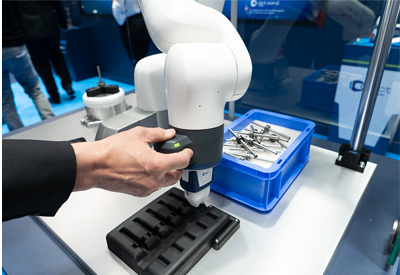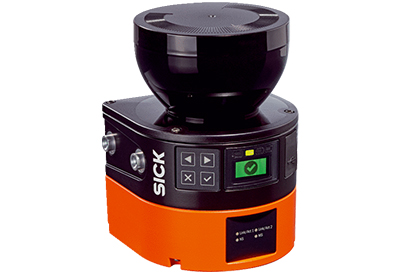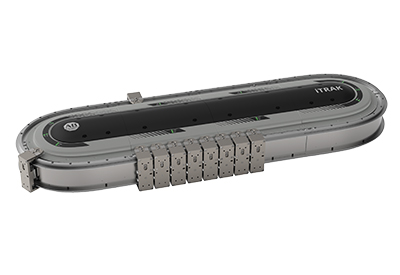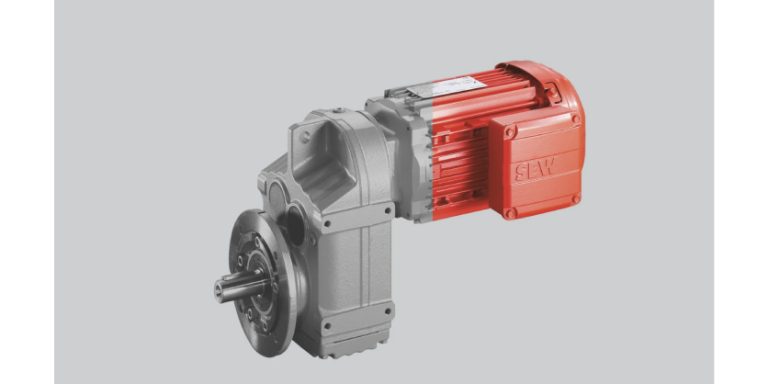Schunk: Collaborative Bin Picking

July 3, 2019
How can collaborative handling scenarios be implemented in non-structured environments? SCHUNK has looked into this question in cooperation with KUKA and Roboception. In a technology study, the three companies show how bin picking can succeed in collaborative operation quickly, simply and efficiently.
The example task is designed realistically: Unsorted metal parts are gripped by a Cobot and taken from a bin, placed in a grinding machine and stored precisely after machining. In parallel, workers should be able to manually feed, move or remove transportation boxes or individual parts during operation. In this way, the study combines bin picking with the concept of human-robot collaboration (HRC), and uses the interaction of different benchmark technologies from robotics, gripping technology and image recognition. Using CAD-based matching, Roboception’s passive stereo camera system rc_visard captures the unsorted workpieces. The world’s first 3D sensor, which enables robots to perform both 3D measurements and positioning in space, processes fully resolved depth images in <1s directly in the camera system. It then uses these to determine the optimum grip points in each case and transmits them without using an external PC directly to a collaboration-capable robot from KUKA. In addition to the camera image, the attractively priced, industrial-grade sensor delivers a depth image, an accuracy image and a confidence image. The latter serves as a measure of confidence in the depth readings, which can be used as the basis for decisions when using artificial intelligence (AI) methods. Because the passive camera system recognizes its surroundings in natural light as well as in artificial lighting in different human working environments, a variety of operating environments are possible.
Image: Roboception
Co-act gripper portfolio
The front end of the Cobot is equipped with an application-specifically designed SCHUNK Co-act gripper, which meets the requirements of EN ISO 10218-1/-2 and ISO/TS 15066, and enables safe interaction with humans. The entire regulation and power electronics are integrated in the interior of the gripper, meaning they don’t take up any space in the control cabinet. Both the interface and the dimensions and interference radii were individually adapted to the application by SCHUNK. In addition to these application-specific Co-act grippers, SCHUNK also provides a standard gripper range for collaborative applications, which includes the SCHUNK Co-act EGP-C DGUV-certified small components gripper and soon the SCHUNK Co-act EGL-C long-stroke gripper, which will also be certified for collaborative applications. With the latter, it will be possible for the first time to apply gripping forces of up to 450 N in HRC applications.
Intuitive robot programming
The Cobot’s handling makes it very easy and intuitive to program new placing positions. In the event of unplanned interruptions, the KUKA robot remembers every executed movement or activity and can resume work ad-hoc without re-learning. Because the solution is very easy to implement on both the sensor side and the robot side and with little need for training, it is suitable for a wide variety of applications and user groups. This does not require extensive knowledge of robotics or image processing. This also reduces the integration workload to a minimum. If required, the camera system can be expanded to include additional projectors and modules for neuronal learning. It can be operated on the Cobot in either stationary or mobile modes, which means that even flexible gripping scenarios on mobile platforms are possible.
https://schunk.com/ca_en/press/press-service/press-releases/article/15594-collaborative-bin-picking/







